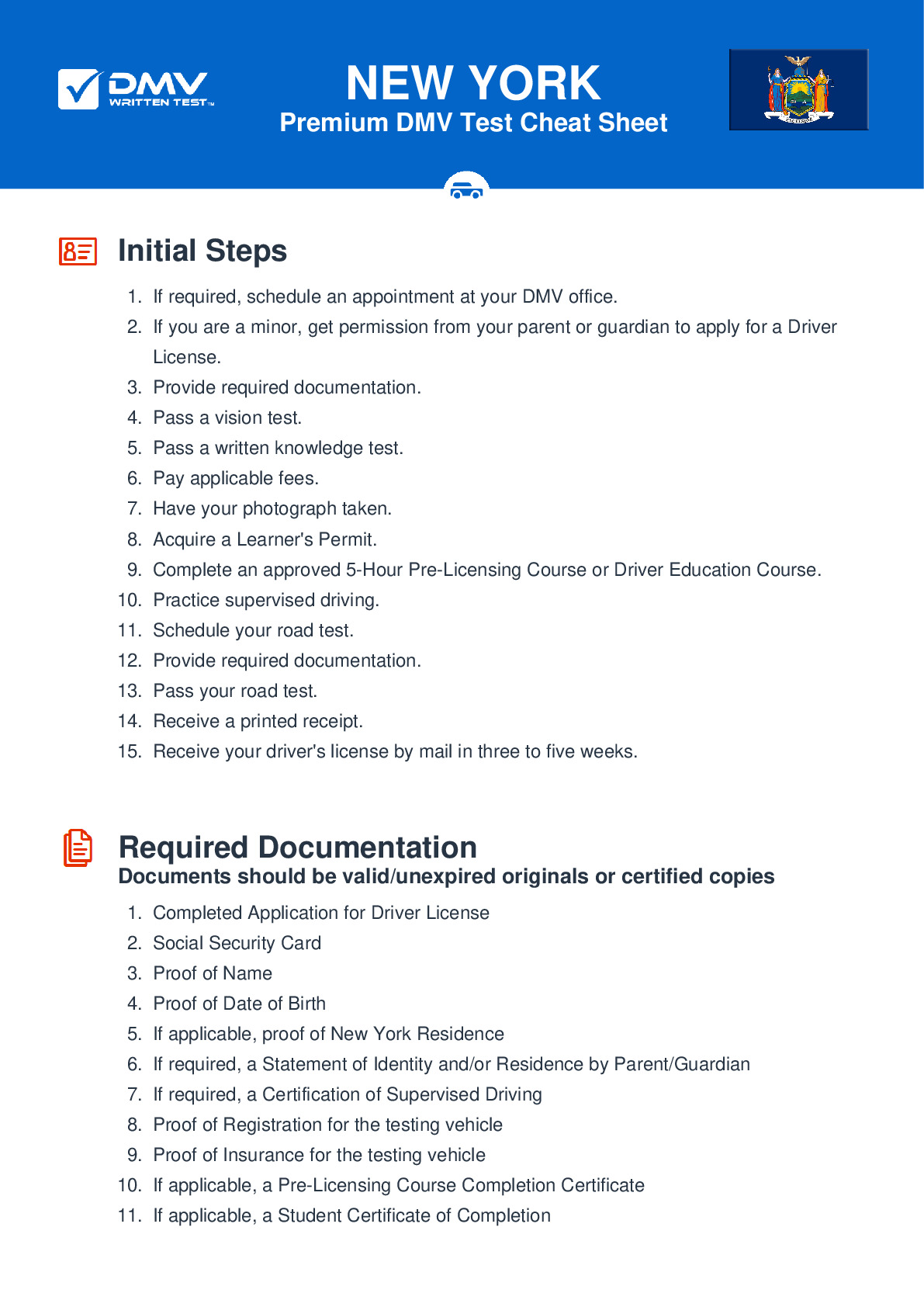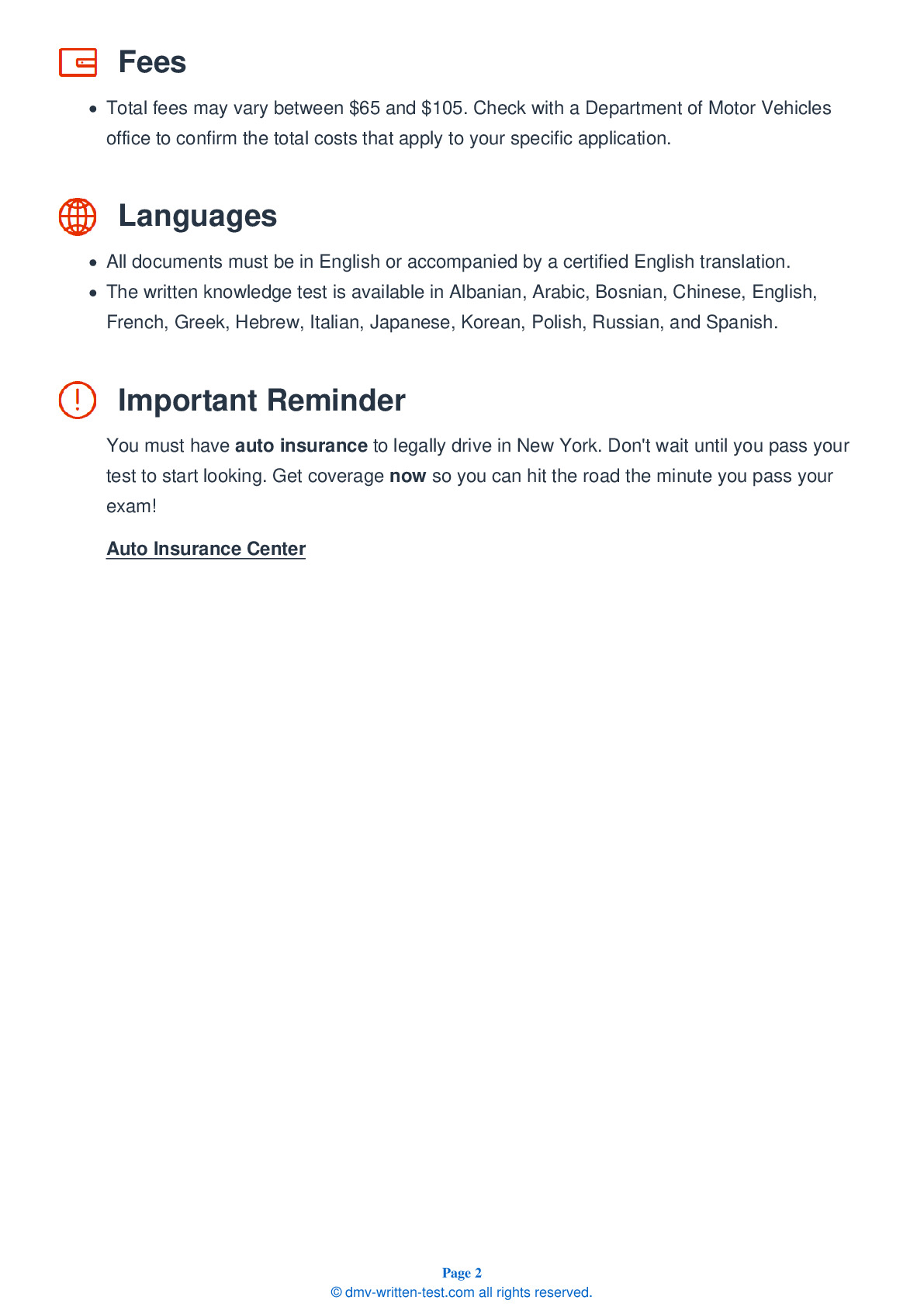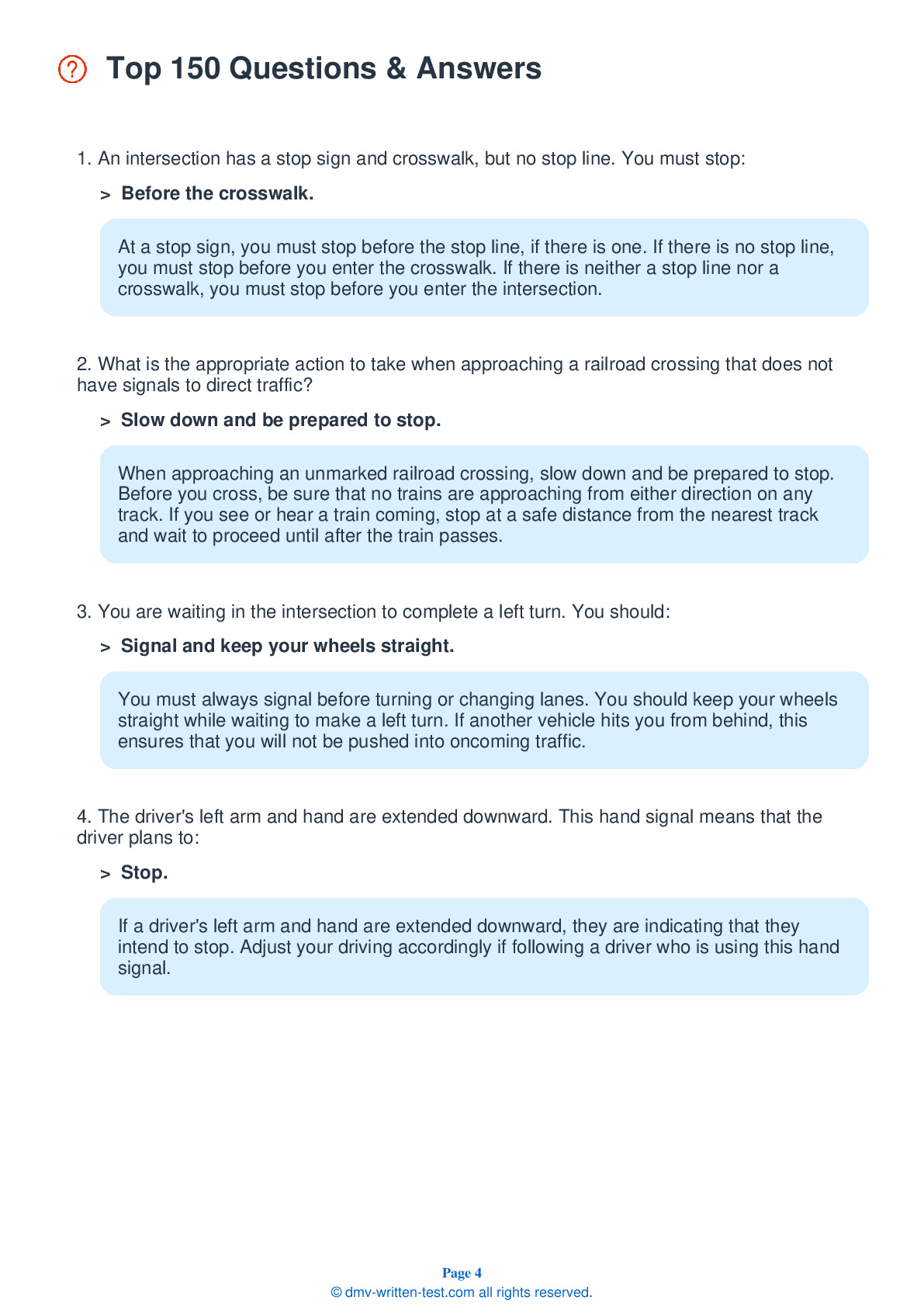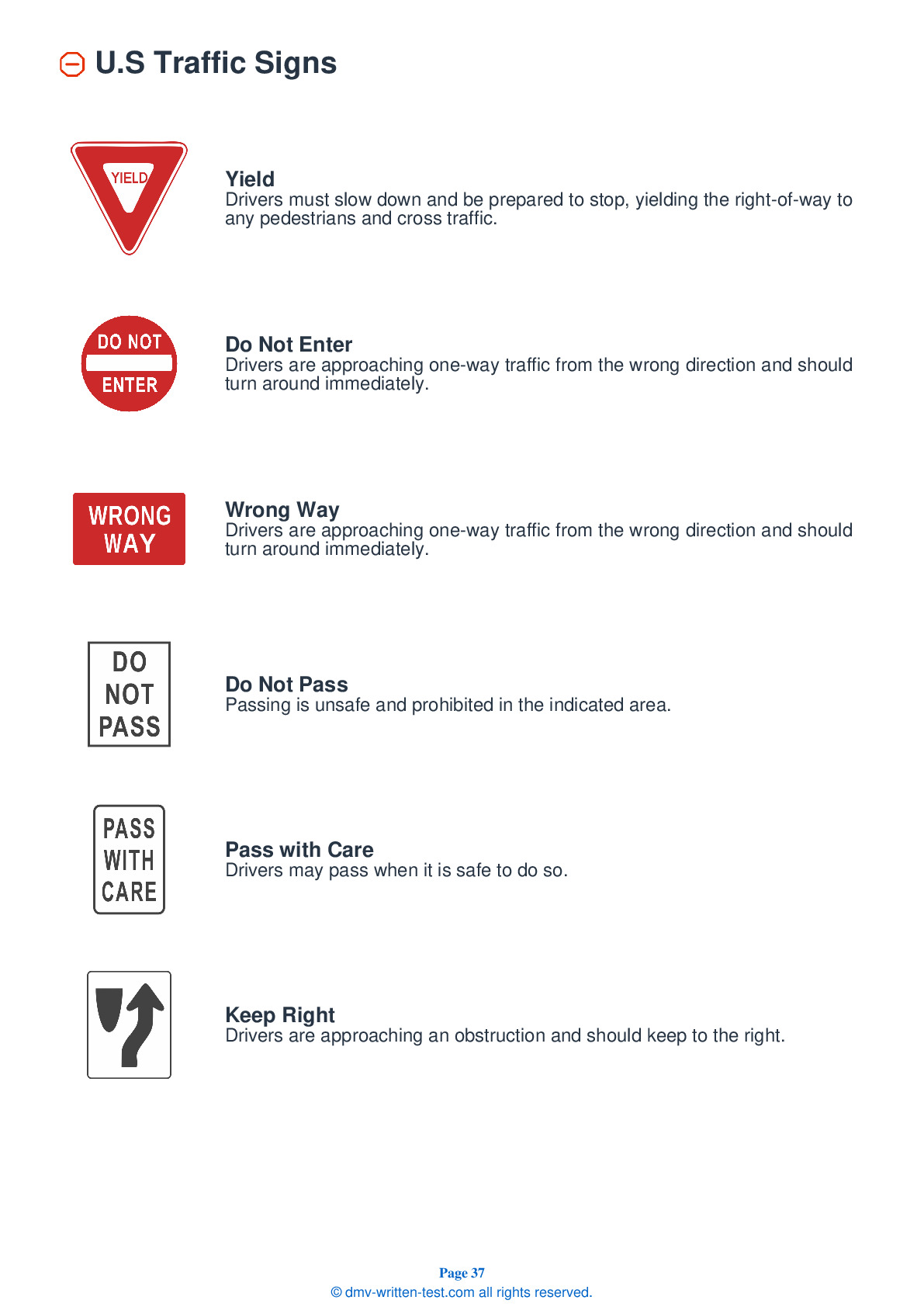2025 New York Permit Test 3
The following questions are from real DMV written tests. These are some of the actual permit questions you will face in New York. Each permit practice test question has three answer choices. Select one answer for each question and select "grade this section." You can find this button at the bottom of the drivers license quiz. For a complete list of questions and answers for New York please visit https://cheat-sheets.dmv-written-test.com/en/new-york/car.
Number of Tests
Number of Question
Passing Score
1. At night, it is hardest to see:
Explanation
Compared to signs and other roadside objects, pedestrians are hardest to see at night.
2. When a pedestrian guided by a dog or carrying a white cane is crossing the street:
Explanation
Blind or partially blind pedestrians may carry a white cane or use the assistance of a guide dog. You must always yield the right-of-way to a pedestrian who is using a guide dog or carrying a white cane.
3. A driver who is taking a non-prescription drug should:
Explanation
Many over-the-counter medications can affect your ability to drive safely. If you take medication, even a remedy for colds or allergies that is not prescribed, check the label for warnings about its effects. If you are unsure, ask your doctor or pharmacist about driving while on the medication.
4. If a tire suddenly blows out while you are driving, you should:
Explanation
If you experience a sudden tire blowout, do not panic. Grasp the steering wheel firmly and take your foot off the accelerator to allow the vehicle to roll to a stop. Lightly apply the breaks when it is safe to do so. Do not move to the shoulder of the road until the car has slowed considerably.
5. Construction zone signs are generally:
Explanation
All temporary signs in work zones have an orange background with black letters or symbols. These signs are found on the right side of the road, or on both the left and right sides if the roadway is a divided highway.
6. What might happen when alcohol is combined with another drug?
Explanation
Consuming both alcohol and another drug may enhance the effects of both. For example, taking one drink when you are also using a cold remedy could affect you as if you have had several drinks.
7. What is a potential effect of taking a prescription drug while drinking alcohol?
Explanation




